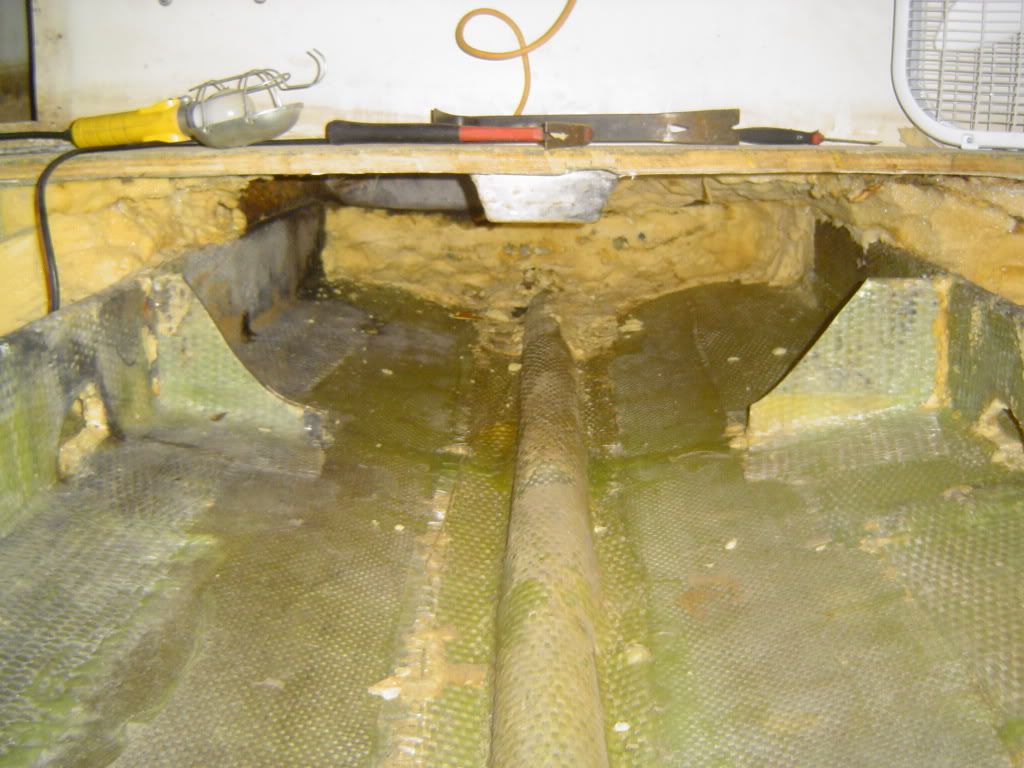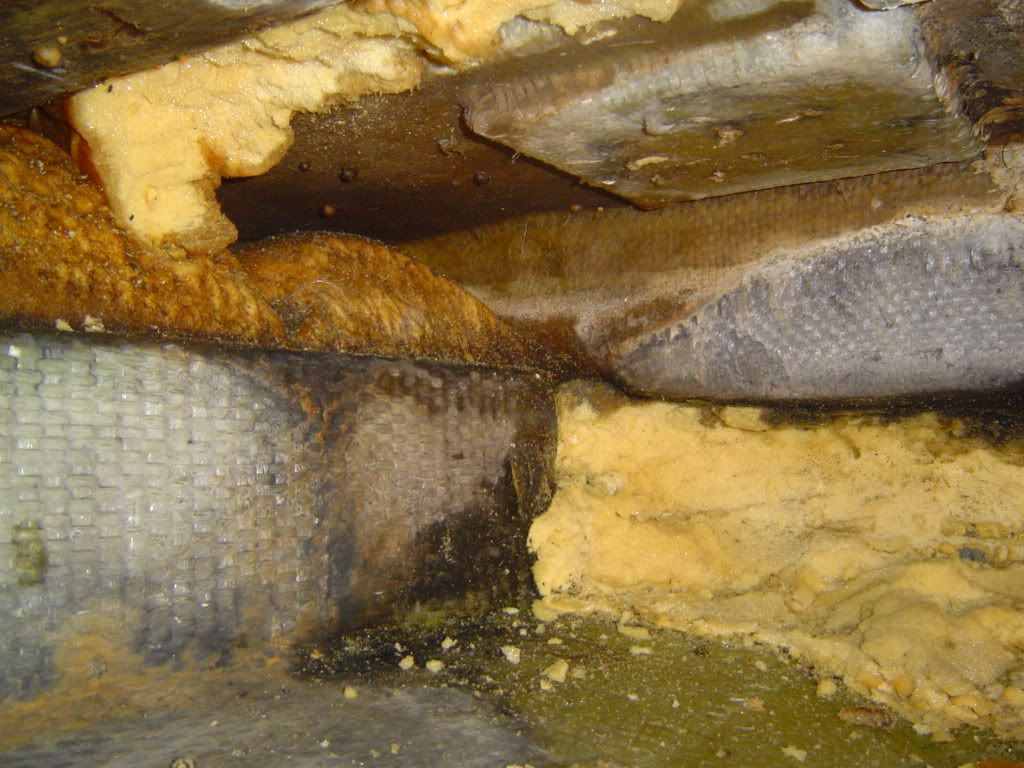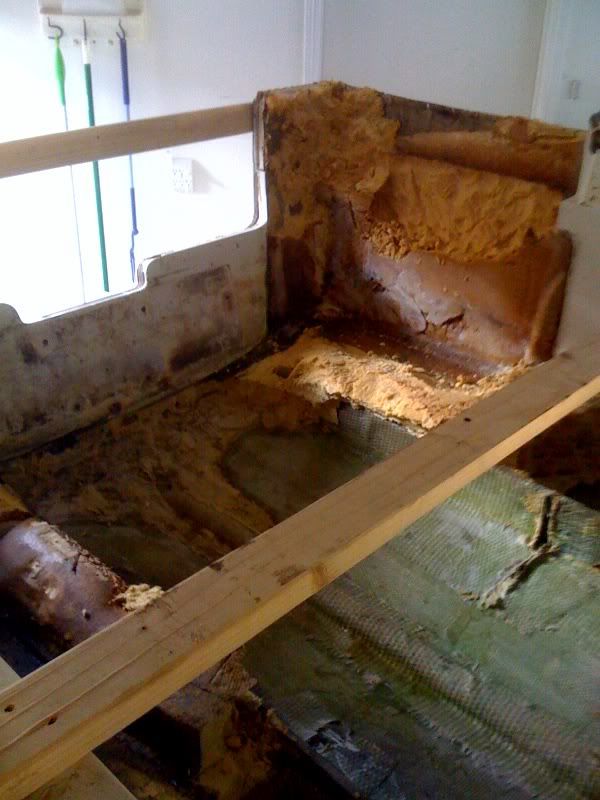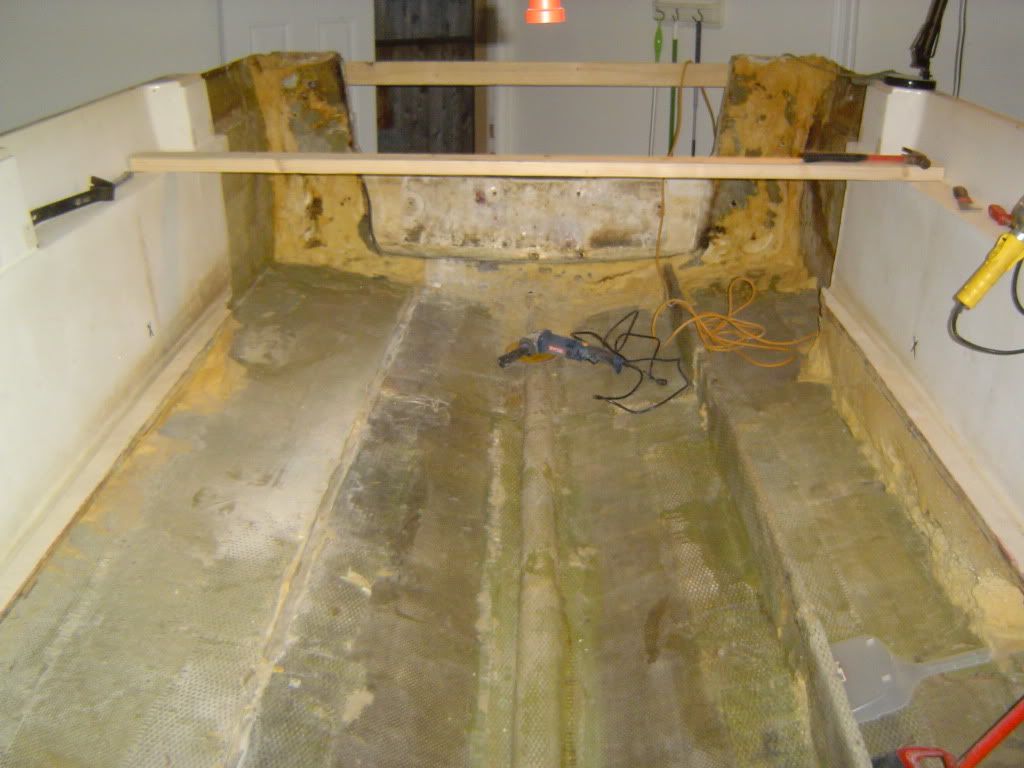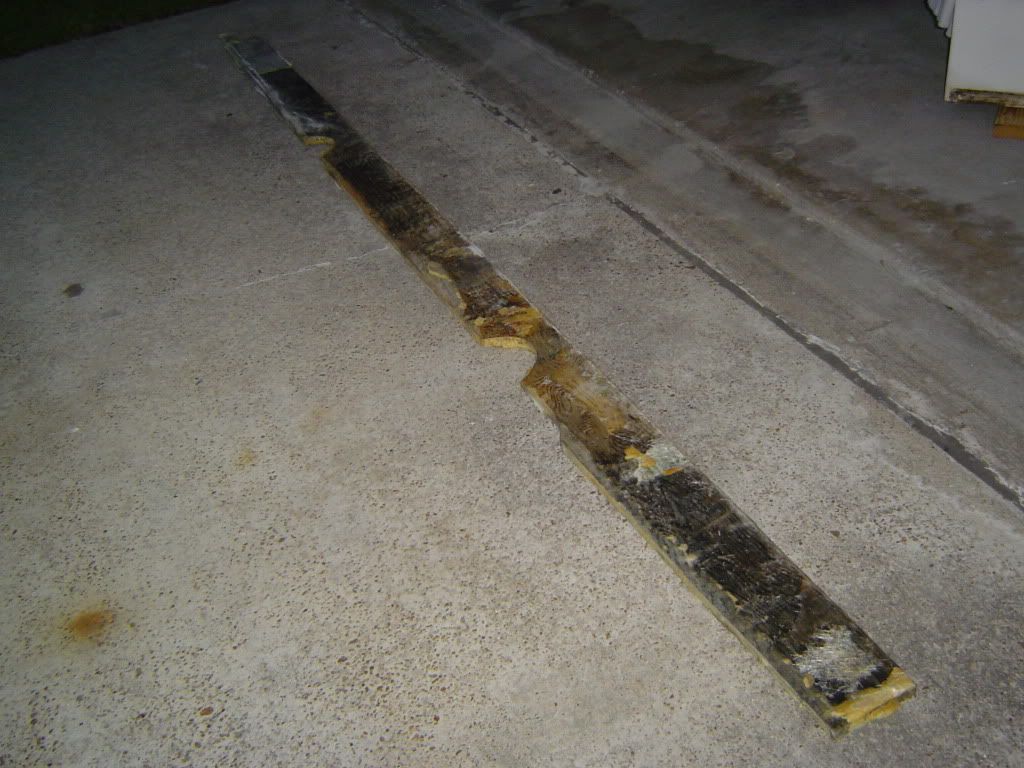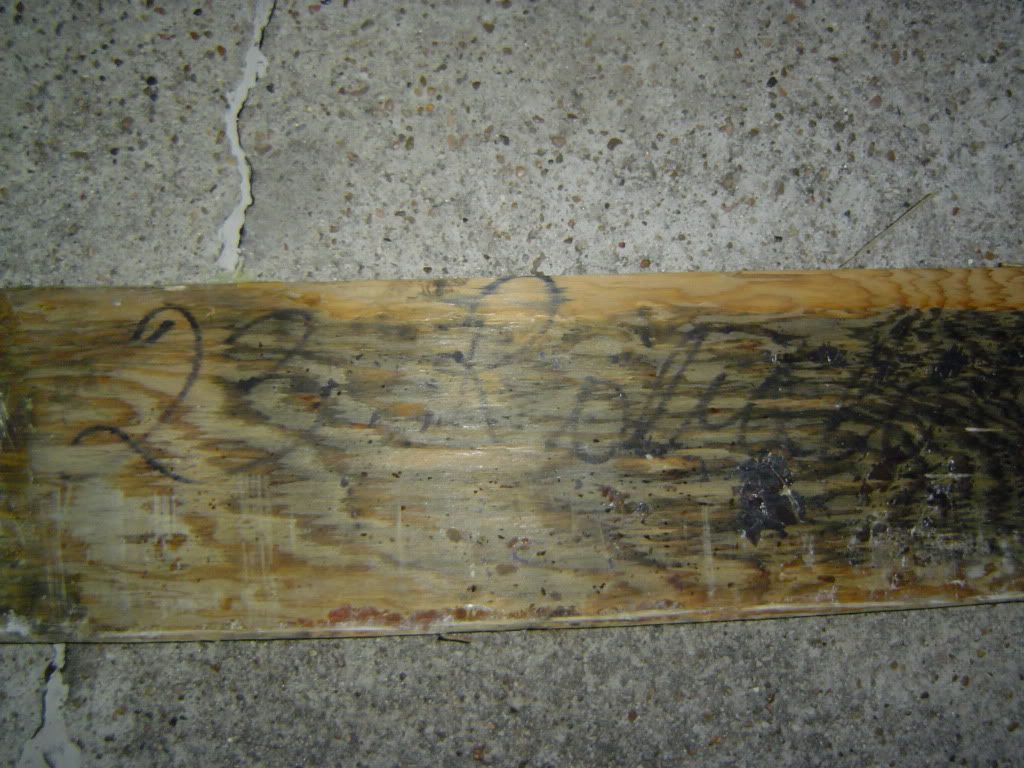Re: Finally began my summer project and I am already confused...
Exactly. And thats just what it came down to. We could have spent days working in a tight space chipping and grinding away at the stringers inch by inch, but instead we decided to spend one day removing the rest of the deck which will save a tone of time and countless hours of hard labor.
Never considered putting an anti-slip step pad to conseal some of the cosmetic work on the cap. Thats an excellent idea. Guess it all just depends on how well the fiberglass work turns out. I hope to have alot of practice by then after glassing the stringers and fixing the damage to the side of the hull.
So today was a much better day than yesterday. I made a fairly good amount of progress in a relatively short amount of time. I finished chipping away most of the foam that was underneath the removed deck piece and scraped off alot of foam that was sticking to the transom. I then finished removing the first stringer and began grinding on some of the fiberglass that had originally incased it.
My goal was to remove the transom in one piece so I could use it as a template to cut out the new transom. But, as soon as you touch the transom it crumbles to pieces. I'll probably end up using cardboard to make a template of the transom as it sits in the boat. By the way, when installing the new transom, do you bed it down with a 1/4 inch of epoxy like you do with the stringers?
Also, there was some kind of substance that looks like it was poured in on top of the transom before the cap was put on. It almost looks like seacast and its hard as a rock. Not sure why anyone would pour seacast over the top of a plywood transom. Any ideas on what this may be? I meant to take pics of it but forgot to.
In any case, here are some pics of what was accomplished today:
This is what she looks like as she sits now. I think Im only going to remove one stringer at a time because the boat really started to move around quite a bit since the rear part of the cap has been removed. I dont want to take a chance on the hull loosing its original shape.
This is the first removed stringer. Nothing fancy, just plywood. A little small for the size of the boat if you ask me.
This is just something I found written in permanemt marker on the stringer. It is hard to see in the pic, but it actually says "23ft Robalo". I thought that was kinda cool.
Alright guys, new stringer will be in by this weekend. So now theres the question of what wood to use. I would like to go with a board instead of just plywood. Something with that is about 2 inches thick, 12 inches tall, and roughly 16ft long. Any ideas on what kind of wood to use??
I saw a rebuild in the completed boats section where the guy had used FIR boards as it was what the manufacturer had originally put in his boat. Could I use the same kind of wood. Or is there possibly something better out there?
Thanks.




















